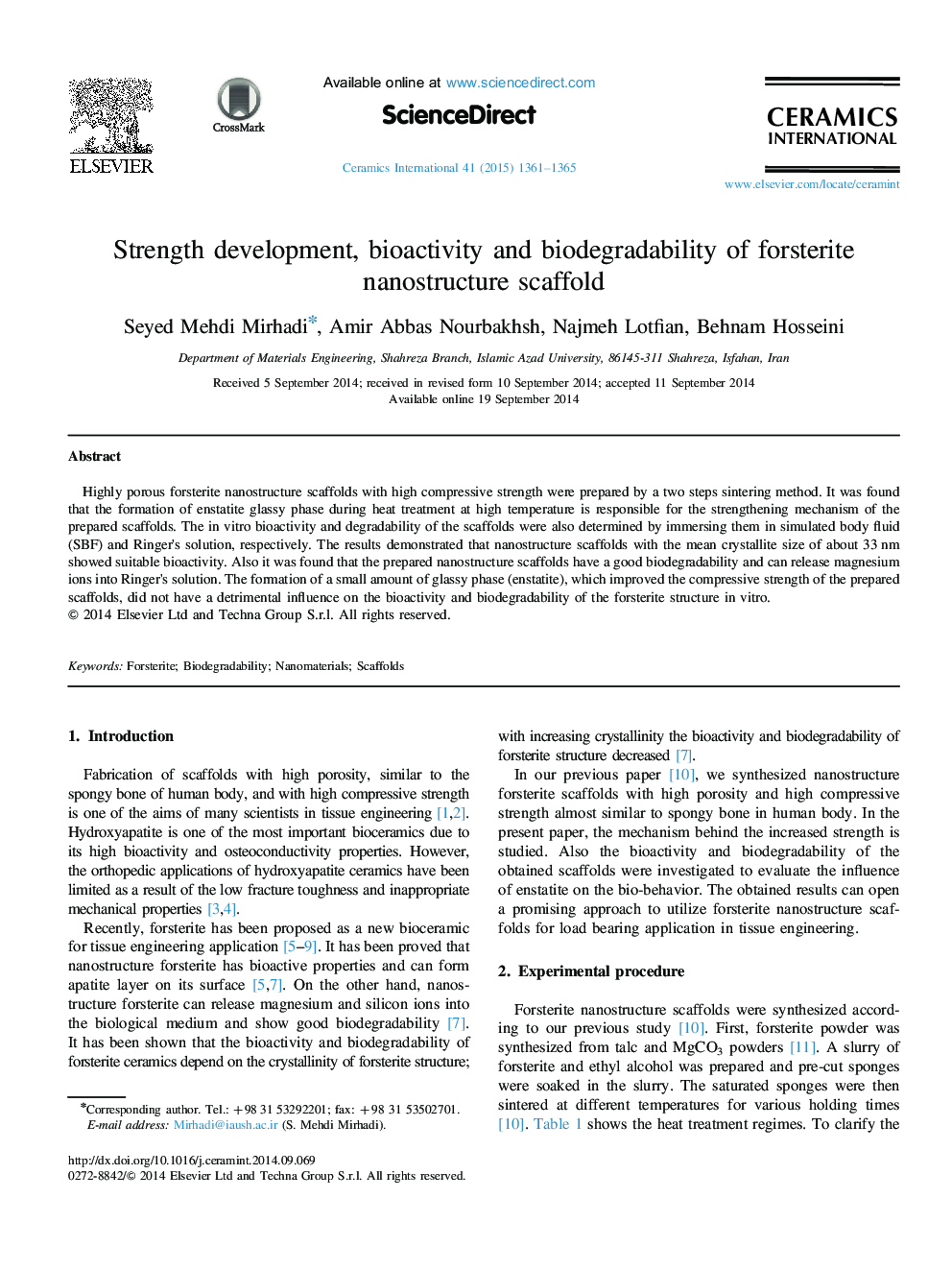| Article ID | Journal | Published Year | Pages | File Type |
|---|---|---|---|---|
| 1460838 | Ceramics International | 2015 | 5 Pages |
Highly porous forsterite nanostructure scaffolds with high compressive strength were prepared by a two steps sintering method. It was found that the formation of enstatite glassy phase during heat treatment at high temperature is responsible for the strengthening mechanism of the prepared scaffolds. The in vitro bioactivity and degradability of the scaffolds were also determined by immersing them in simulated body fluid (SBF) and Ringer׳s solution, respectively. The results demonstrated that nanostructure scaffolds with the mean crystallite size of about 33 nm showed suitable bioactivity. Also it was found that the prepared nanostructure scaffolds have a good biodegradability and can release magnesium ions into Ringer׳s solution. The formation of a small amount of glassy phase (enstatite), which improved the compressive strength of the prepared scaffolds, did not have a detrimental influence on the bioactivity and biodegradability of the forsterite structure in vitro.
